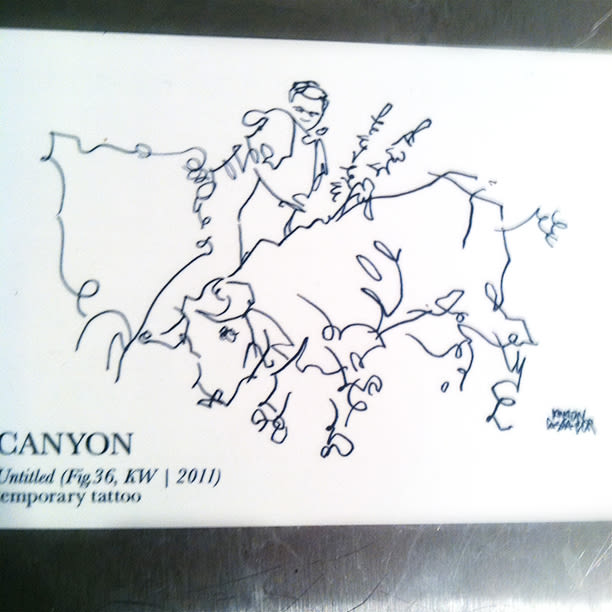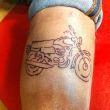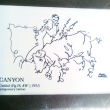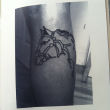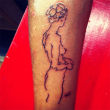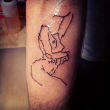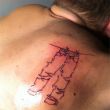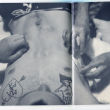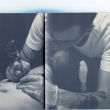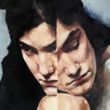A tattoo can either be a permanent art piece or an expensive mistake, and which category it falls under depends on who's tattooing you and how you wear it (e.g., Freja’s delicate ink compared to the girl with an indecipherable lower-back tat falling off her barstool in Cabo).
I first came across Canyon Castator’s work at Saturday’s last February, where his zine, an elegant, pocket-sized book containing 36 of his ink-on-skin drawings [1,2,3,4], was for sale amongst a bunch of surf magazines. (Note: It came with a temporary tattoo depicting a bull and toreador [5], which I promptly slapped on my bicep and felt very cool about, which hasn't happened with me and a temporary tattoo since the third grade.) A few weeks later, I attended a party where I saw him stationed at the end of a massive line of guests waiting to get tattooed on the spot (dear reader, I chickened out) [6], and I couldn’t decide if I was more impressed by his oil paintings [7], his impeccable free-hand drawings—some framed on the wall, some mid-completion under the tattoo gun, some already on bodies walking around the party, long-finished, or only just done, still red and slicked with protective balm—or his complete and utter calm under pressure. I’ve been following his career via his website and his tumblr, and his paintings (and tattoos) keep getting better. I recently asked him to tell me about the jump from fine art to skin art:
“I don't consider myself a tattoo artist,” he said. (He thinks of himself as a painter, first and foremost.) “Like any medium, tattooing possesses its own visual language...I was drawn to the un-translatability of it. My early attempts [at tattooing] were trial and error. I was unfamiliar with the techniques and uninterested in the imagery. In experimenting, I found a correlation in techniques I had developed with pen-and-ink drawings. The shorter, nearly instinctual marks were easily reproduced with the machine, creating that weightless, sketch-like aesthetic.”
Positively painterly.
—Alessandra Codinha


